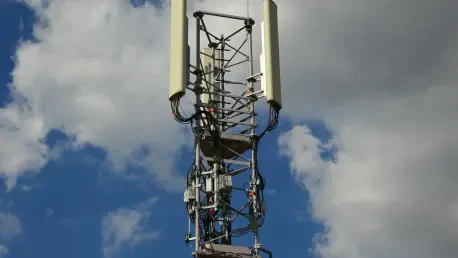In a world where connectivity is often taken for granted in urban centers, vast swathes of the planet—spanning oceans, deserts, and remote wilderness—remain frustratingly out of reach for traditional networks, creating a digital divide that has long hindered industries like logistics, agriculture, and environmental monitoring. This barrier, where real-time data is critical yet unattainable in isolated regions, has now been shattered by a groundbreaking achievement from Sateliot, a trailblazing 5G IoT satellite telecommunications operator, in collaboration with Nordic Semiconductor. Their successful transmission of 5G IoT data from a standard commercial device to a Low Earth Orbit (LEO) satellite constellation marks a historic first, promising to redefine global communication. This milestone not only bridges the gap between terrestrial and space-based networks but also positions Europe as a frontrunner in next-generation telecommunications, paving the way for unprecedented applications across diverse sectors.
Breaking New Ground in Connectivity
A Milestone in Seamless Integration
The recent success of Sateliot’s 5G IoT transmission represents a monumental leap forward in the realm of global connectivity. By partnering with Nordic Semiconductor, a leader in low-power wireless solutions, and Gatehouse Satcom, a key developer of 5G satellite software, Sateliot has demonstrated the ability to connect a standard cellular IoT device to its LEO satellite network without any hardware modifications. Utilizing Nordic’s nRF9151 low-power cellular IoT module, the test mirrored the roaming experience of terrestrial mobile networks, adhering to the 5G NB-IoT Release 17 standard. This compatibility ensures that existing commercial devices can operate within space-based networks, eliminating the need for expensive customizations. Such an achievement tackles a persistent challenge in the IoT and machine-to-machine (M2M) markets: the absence of harmonized, worldwide coverage. This breakthrough opens doors to connecting the 80% of the Earth’s surface currently beyond the reach of traditional networks.
Implications for Remote Regions
Beyond the technical feat, this advancement holds transformative potential for industries operating in remote and underserved areas. Vast regions such as oceans, deserts, and isolated rural zones, previously cut off from real-time data exchange, can now be integrated into the digital ecosystem. Applications in logistics could see enhanced tracking of shipments across international waters, while agriculture might benefit from precision monitoring of crops in far-flung fields. Environmental initiatives, too, stand to gain from continuous data collection in untouched wilderness areas for climate studies or wildlife protection. Additionally, critical infrastructure and defense sectors could leverage this technology for secure, reliable communication in locations where terrestrial networks are impractical. By extending connectivity to these forgotten corners of the globe, Sateliot’s innovation promises not just operational efficiency but also a significant reduction in the digital divide that has long plagued global equity in access to technology.
Shaping the Future of IoT and Telecommunications
Democratizing Access to Global Coverage
One of the most striking aspects of Sateliot’s breakthrough is its role in democratizing IoT connectivity on a global scale. By proving that standard, low-cost IoT devices can interface directly with LEO satellites, the barriers to entry for businesses, governments, and communities seeking comprehensive coverage are drastically lowered. This aligns closely with Europe’s strategic ambitions to lead in satellite and 5G technologies, fostering resilience and independence in communications infrastructure. The cost-effectiveness of using existing devices without adaptation means that even small-scale enterprises can tap into space-based networks, enabling a broader range of stakeholders to participate in the digital economy. Statements from industry leaders reflect a shared optimism, with Sateliot’s CEO likening the achievement to other landmark moments in space connectivity, while Nordic Semiconductor highlights the potential to accelerate IoT deployments across varied use cases.
Commercial Strength and Scalability
Sateliot’s technological triumph is matched by its robust market presence, underscoring the scalability of this innovation. With recurring contracts valued at €250 million from over 450 customers across more than 50 countries, the company is already carving out a significant niche in the industry. Projections indicate a trajectory toward €1 billion in revenue by 2030, signaling strong commercial traction alongside technical progress. This dual focus on innovation and market growth paints a picture of sustainable advancement, where cutting-edge solutions meet real-world demand. The collaboration with established players like Nordic Semiconductor and Gatehouse Satcom further bolsters credibility, ensuring that the technology can be rolled out efficiently across diverse sectors. This milestone not only validates the feasibility of seamless terrestrial-satellite integration but also establishes a foundation for long-term growth in the telecommunications landscape.
A Vision for Broader Impact
Looking back, the successful test of 5G IoT transmission via LEO satellites by Sateliot and its partners stood as a defining moment in the evolution of global communication. This achievement bridged critical gaps between terrestrial and space-based networks, enabling standard devices to connect from anywhere on Earth. The implications were profound, as industries once limited by geographic isolation gained access to reliable, real-time data. Reflecting on this historic step, it became clear that the path forward involved scaling these solutions to meet growing demand, particularly in underserved regions. Governments and private entities alike needed to prioritize investments in satellite infrastructure to ensure equitable access. Collaborative efforts between technology providers were essential to refine standards and drive adoption. Ultimately, the focus shifted to building on this foundation, ensuring that the promise of universal connectivity became a tangible reality for all corners of the globe.









